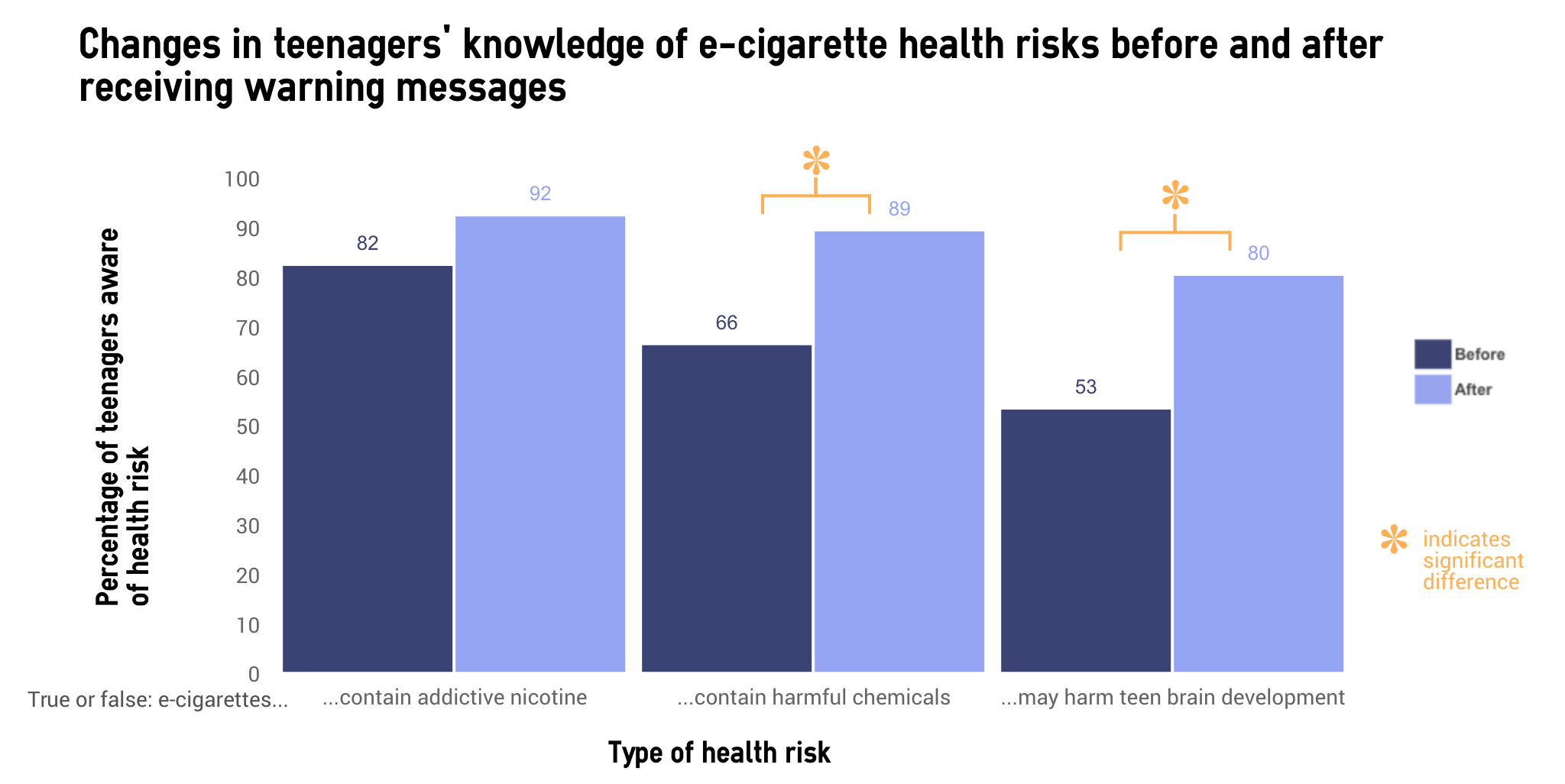In the last couple of years, fewer American teenagers have smoked cigarettes. However, e-cigarettes and vaping devices have increased in popularity among teenagers. E-cigarettes and related devices can still have harmful effects on the bodies and minds of young people, and might make teenagers more likely to smoke regular cigarettes. One way to mitigate these potential harms is to distribute warning messages. This week, ASHES reviews a study by Seth Noar and colleagues that evaluates how teenagers respond to e-cigarette harm warning messages sent by text-message.
What was the research question?
What do teenagers think about e-cigarette harm warning messages delivered via text-message?
What did the researchers do?
The researchers invited teenagers between 14 and 18 to participate in this study. Participants completed an online survey that assessed their willingness to use e-cigarettes and their knowledge of the risks of e-cigarette use. The researchers then texted one of three warning messages to the participants each day for six days.
- One message warned teens of the presence of addictive nicotine in e-cigarettes,
- another discussed the harmful chemicals found in these devices, and
- the last message mentioned the detrimental effects of e-cigarettes on teenagers’ brains.
At the end of the study, participants answered a similar online survey as before that also included questions about whether they thought the messages were effective and fear-provoking. The researchers then analyzed the data using ANOVA and McNemar tests.
What did they find?
Participants thought the messages about harmful chemicals in these devices and detrimental effects on the teenage brain were significantly more effective and fear-provoking than the nicotine message. After seeing all three warning messages, participants were significantly more likely to understand that e-cigarettes contain harmful chemicals and can negatively impact teenage brain development. However, participants did not increase their knowledge about the role of nicotine in e-cigarettes, likely because most participants already knew this before the study began. There was no change in how willing participants were to use e-cigarettes from the beginning to the end of the study.
 Figure. Bars indicate percentage of participants aware of specific e-cigarette health risks before and after receiving the health harms warning messages. Click image to enlarge.
Figure. Bars indicate percentage of participants aware of specific e-cigarette health risks before and after receiving the health harms warning messages. Click image to enlarge.
Why do these findings matter?
Many people think that e-cigarettes and vapes are safer than smoking regular cigarettes. However, e-cigarettes and vapes are also associated with health risks. It is important for teenagers to know about these risks so that they can make informed decisions for their health. This study suggests that text messages are a feasible way to spread this kind of information to adolescents, although they might not be effective in reducing e-cigarette use.
Every study has limitations. What are the limitations in this study?
This study only lasted eight days. Although participants increased their knowledge about e-cigarette harms over the course of the study, we do not know if they retained this knowledge over a longer period of time.
For more information:
Smokefreeteen has resources and available teenagers concerned about their smoking. For additional tools, please visit the BASIS Addiction Resources page.
— Rhiannon Chou Wiley
What do you think? Please use the comment link below to provide feedback on this article.





Drbogash August 28, 2018
The scary thing is that the research is suggesting that vaping has different effects than does combustible smoking. This means that, although we know that biochemical changes occur with vaping that do NOT occur with smoking, we just don’t really know what this will translate to in the future. But you can bet it won’t be good.